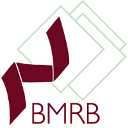
Next: bmrb.software Up: The list of functions Previous: bmrb.read Contents Index


Specify the scripts used in the analysis.
file: The name of the script file.
dir: The directory where the file is located.
analysis_type: The type of analysis performed.
model_selection: The model selection technique used, if relevant. For example `AIC' model selection.
engine: The software engine used in the analysis.
model_elim: A model-free specific flag specifying if model elimination was performed.
universal_solution: A model-free specific flag specifying if the universal solution was sought after.
This user function allows scripts used in the analysis to be included in the BMRB deposition. The following addition information may need to be specified with the script.
The analysis type must be set. Allowable values include all the data pipe types used in relax, ie:
The model selection technique only needs to be set if the script selects between different mathematical models. This can be anything, but the following are recommended:
The engine is the software used in the calculation, optimisation, etc. This can be anything, but those recognised by relax (automatic program info, citations, etc. added) include:
The model_elim flag is model-free specific and should be set if the methods from "d'Auvergne, E. J. and Gooley, P.

The universal_solution flag is model-free specific and should be set if the methods from "d'Auvergne E. J., Gooley P.

For BMRB deposition, to specify that the full_analysis.py script was used, type one of:
[numbers=none]
relax> bmrb.script('full_analysis.py', 'model-free', 'AIC', 'relax', True, True)
[numbers=none] relax> bmrb.script(file='full_analysis.py', dir=None, analysis_type='model-free', model_selection='AIC', engine='relax', model_elim=True, universal_solution=True)